11 Dogs Closest to Wolves [with Photos]
Ready to bring a new puppy home? If you’re a fan of big, bold dogs, why not consider a breed that looks just like a wolf? There are certain dog breeds that have a strong genetic link or look remarkably similar to these wild and wonderful creatures.
In this article, we’ve gathered a list of such breeds for you to explore. But we won’t just tell you about them, we’ll show you, with a range of fantastic photos capturing each breed’s unique charm. So whether you’re just curious, or actually looking to pick out your own wolf-like pet, this list will give you a fun and enlightening peek into the world of dogs that carry a hint of the wild in their looks. Let’s get started and see the canine world through a wolf’s eyes!
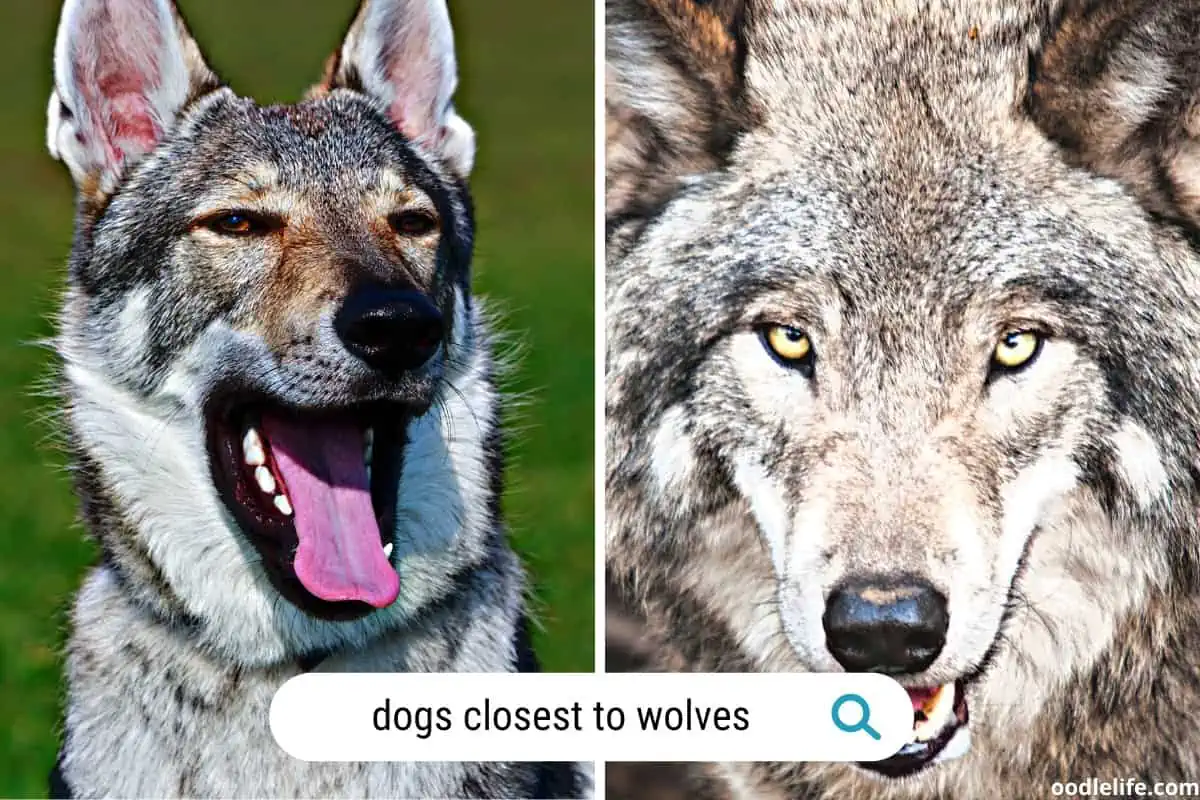
The History of Dog Breeds and Wolves
Before we get into the particular breeds of dogs closest to wolves, we will discuss the breeding of dogs over the centuries and their divergence from the wolf. Between 15,000 and 40,000 years ago, the dog split from the wolf lineage to transform into a helper for farmers and sheepherders.
On the other hand, wolves have remained wild and live deep in the forests. Naturally, they steer clear of humans. Despite this divergence, there are still many dog breeds that have a genetic closeness with wolves.
They can have similar behavior and share physical characteristics to wolves as well.
Below, we have detailed 11 of the top dogs closest to wolves in genes, behavior, and looks.
Siberian Husky
This dog breed comes from the north of Siberia and has long helped humans as a sledding dog. The Siberian Husky has similar genetics to wolves and an appearance that has often led to the breed being confused for the Siberian Wolf.
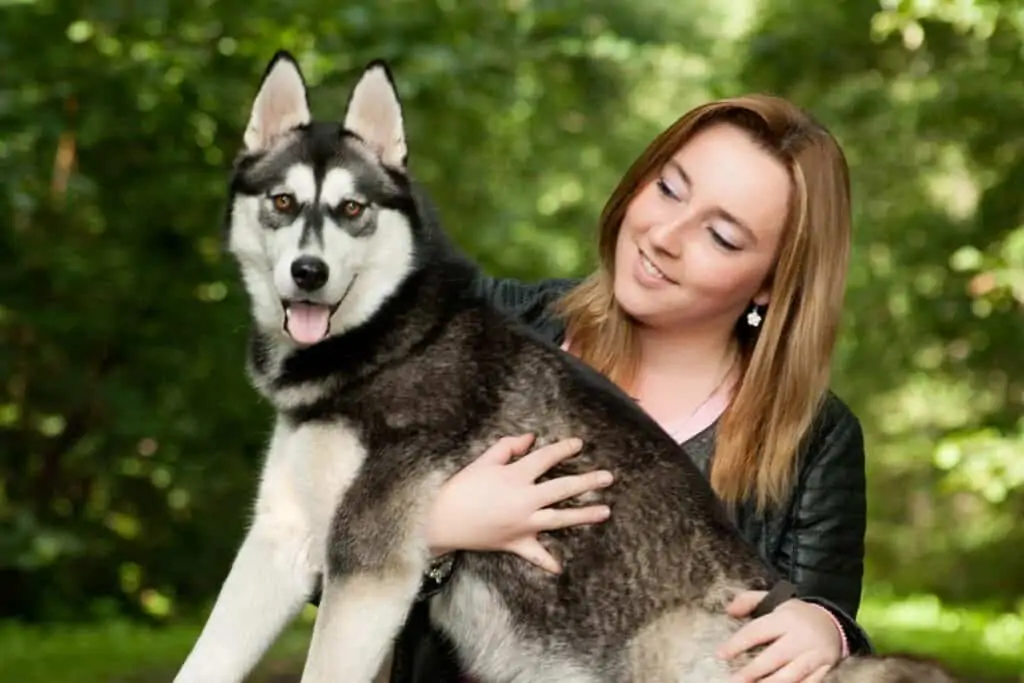
A typical Siberian Husky is medium-sized and has a thick double coat, triangular ears, and comes in white, black, and gray colors.
Other variations include red and white, while others may appear as black and tan. Typically, Siberian Huskies are known for being intelligent, friendly, and gentle dogs.
Czechoslovakian Wolfdog
The Czechoslovakian Wolfdog is a mix of Carpathian wolves and German shepherd dogs. It first emerged in the 1950s as a result of experimental breeding. Karel Hartl bred this dog for the border patrol guard in Czechoslovakia.
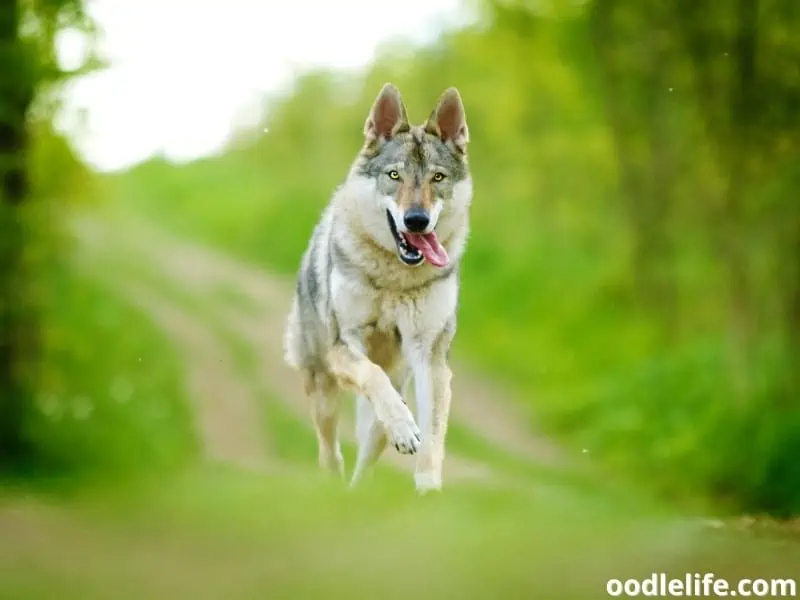
This dog’s temperament is fearless, active, and courageous.
Despite its impressive size, the Czechoslovakian Wolfdog is sociable, active, and highly affectionate dog. Its coat color is usually yellowish-gray to silver-gray. The lifespan of this dog breed ranges from 10 to 15 years.
Alaskan Malamute
The Alaskan Malamute is the closest to a wolf in terms of appearance. Further, they may look alike due to the Alaskan Malamute’s genetic make-up having extensive crossover with the wolf.
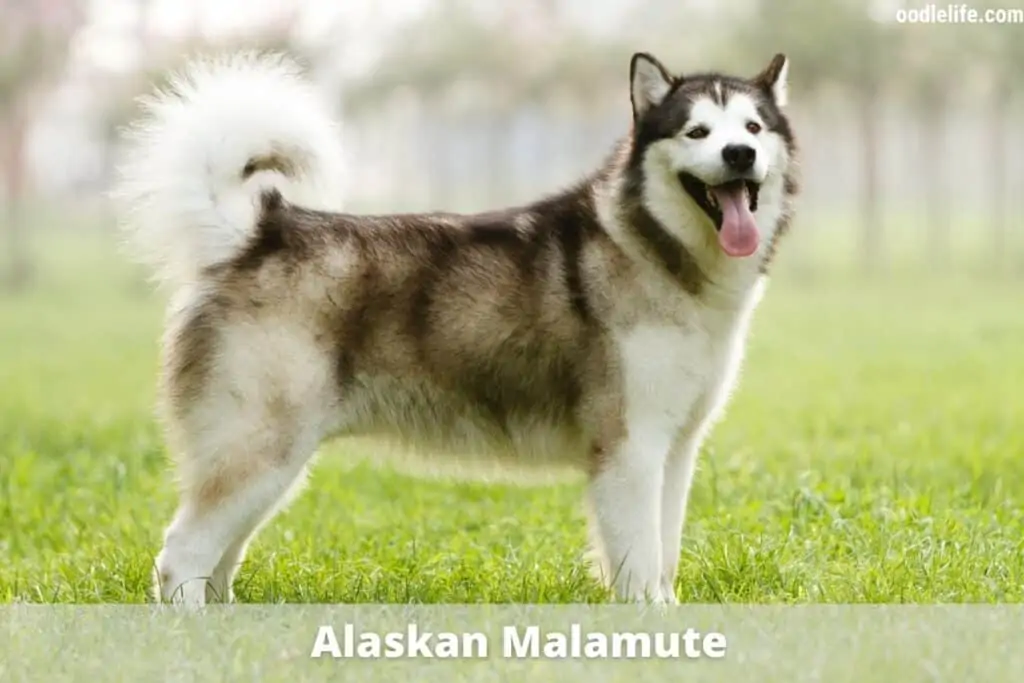
This dog breed is loyal, playful, and affectionate with its owners. They will weigh as much as 85 pounds and stand 25 inches in height at shoulder level. The thick, double-coat of the Alaskan Malamute does require plenty of grooming.
Reflecting their wild origins, Alaskan Malamutes need daily exercise and lots of playtime.
Saarloos Wolfdog
The Saarloos Wolfdog was bred directly from a Eurasian gray wolf as well as a German Shepherd. It was the product of a Dutch citizen named Leendert Saarloos, who believed that the German Shepherd had become too domesticated.
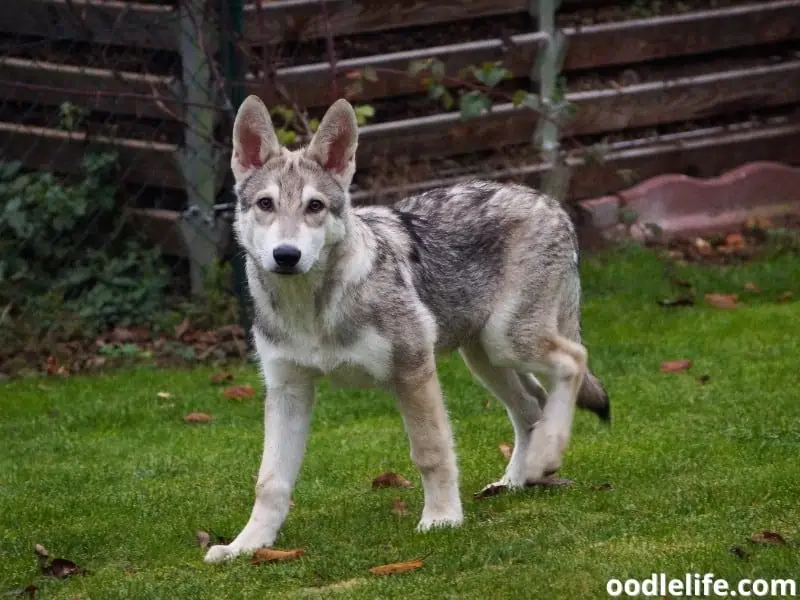
In terms of behavior and physical traits, the Saarloos Wolfdog lives up to its name as a breed that evokes its wolf heritage. However, they have a good temperament, and can be loving and affectionate.
One study from 2015 showed that the Saarloos Wolfdog has more genetic links to the gray wolf than any other dog breed.
Samoyed
The Samoyed can range anywhere from 19 to 23 inches in height. It is a powerful canine with a thick coat that lets it overcome the cold, much like the wolf.
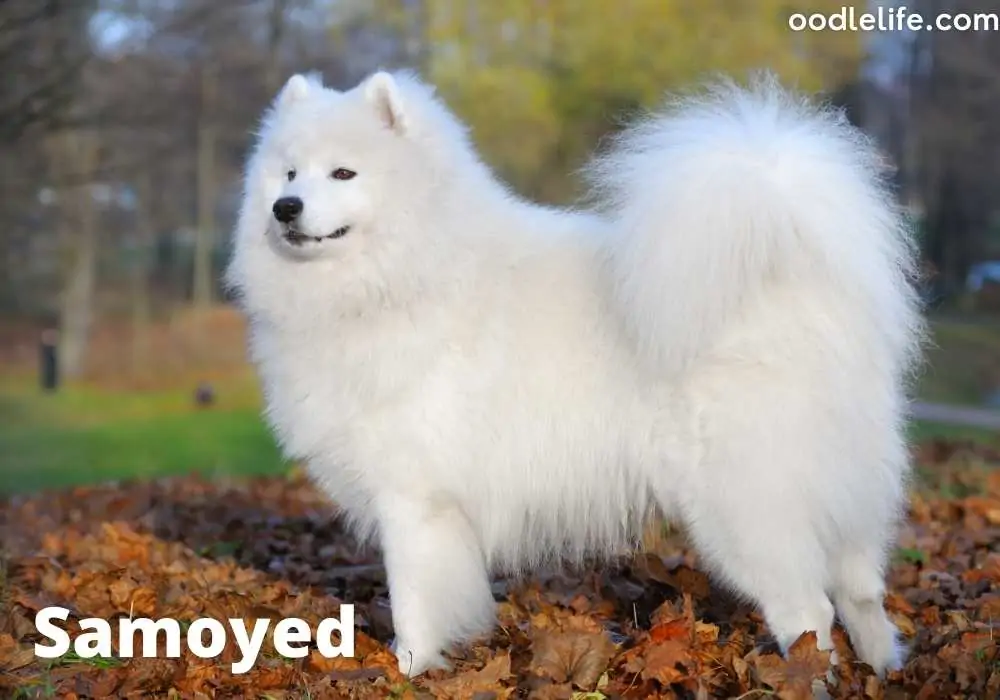
Interestingly, the Samoyed’s mouth is shaped in such a way that it always looks like it’s smiling. While it is endearing, it does have a practical function to prevent drooling and forming icicles in the cold winters.
Samoyeds are bred for work as sled dogs in the coldest and most brutal conditions. You should raise this pup in colder regions, as they are at risk of overheating in warmer climates.
German Shepherd
The German Shepherd is the third most popular dog breed in the United States. Long-haired German Shepherds look more like wolves than you’d expect. This breed is noted for its intelligence and bundles of energy. As such, you’ll need to keep your pup stimulated with physical activities and regular exercise.
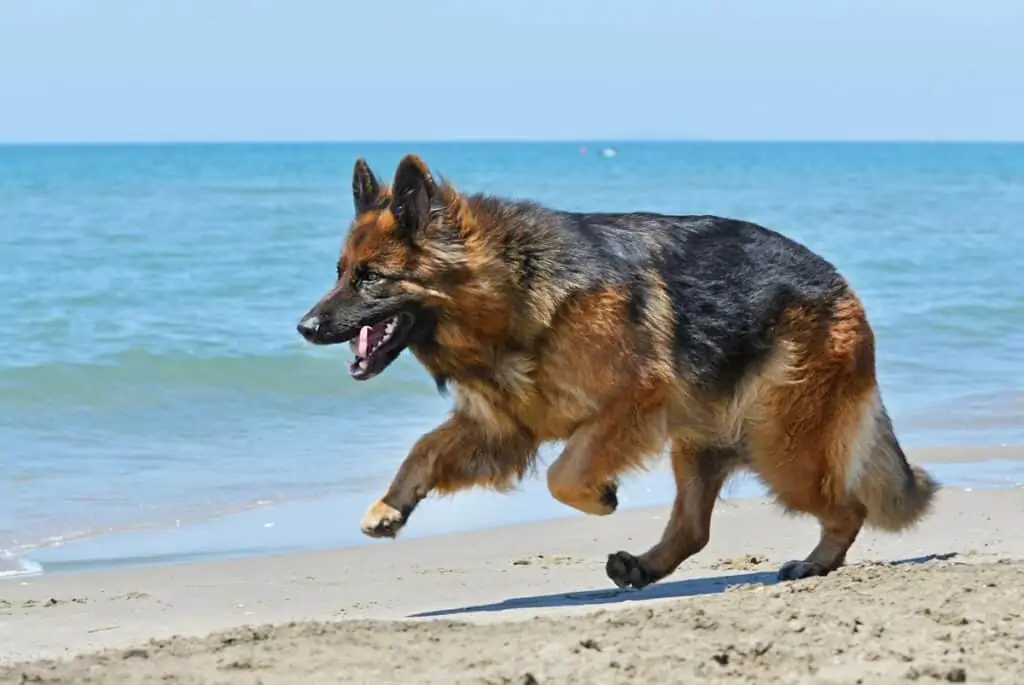
If you have children who can spend hours playing with this pup, then this breed is a good choice for your home.
Canadian Eskimo Dog
The Canadian Eskimo (also known as the Canadian Inuit) breed is similar to a wolf and one of the rarest dogs worldwide. Sadly, experts estimate there are fewer than 300 Canadian Eskimo dogs left, putting them at risk of extinction. This canine was bred to act as a sled dog and has the white and gray colors of a wolf.
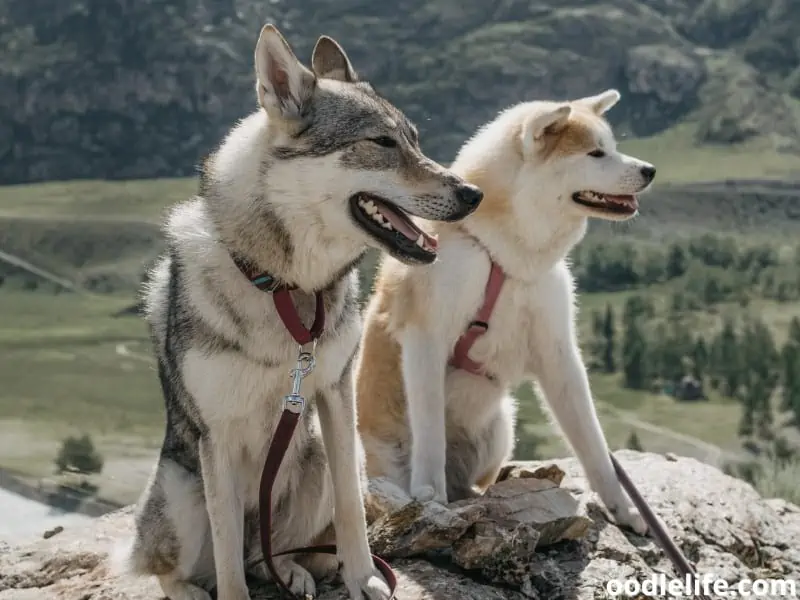
Despite being effective watchdogs, the Canadian Eskimo is known for being a loveable and affectionate pup. They possess tremendous energy and are renowned for their high stamina.
Basenji
The Basenji is reminiscent of the wolf, in large part thanks to its face. For instance, this canine has pointed ears and a long muzzle.
It is a hunting dog from Africa and has genetic similarities to a typical wolf. Surprisingly, the Basenji doesn’t bark, but instead howls.

Shiba Inu
The Shiba Inu is a small dog that comes from Japan. Despite their modest dimensions, they share genetic crossover with the wolf. What’s more, their temperament and behavior patterns are similar to wolves.
And, just like their wild counterparts, the Shiba Inu often hunt rabbits and ducks.
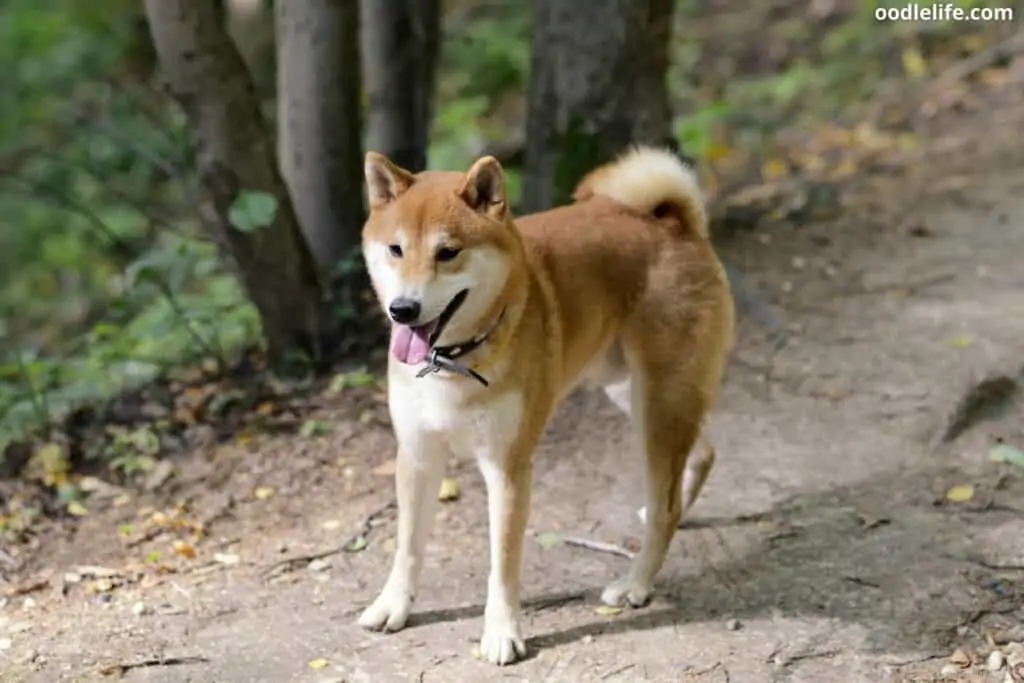
Shiba Inus are one of the most popular fluffy dog breeds on the West Coast.
Shih Tzu
Shih Tzu dogs are beautiful and athletic pets that originate from Tibet. It is an ancient breed, with a recorded history of more than 1,000 years.
You would never expect that the small toy dog Shih Tzu is genetically one of the closest breeds to a wolf. Yet, studies have shown that the Shih Tzu belongs to a group of breeds with links to the wolf. Ironically, its Mandarin name translates as “Little Lion.”
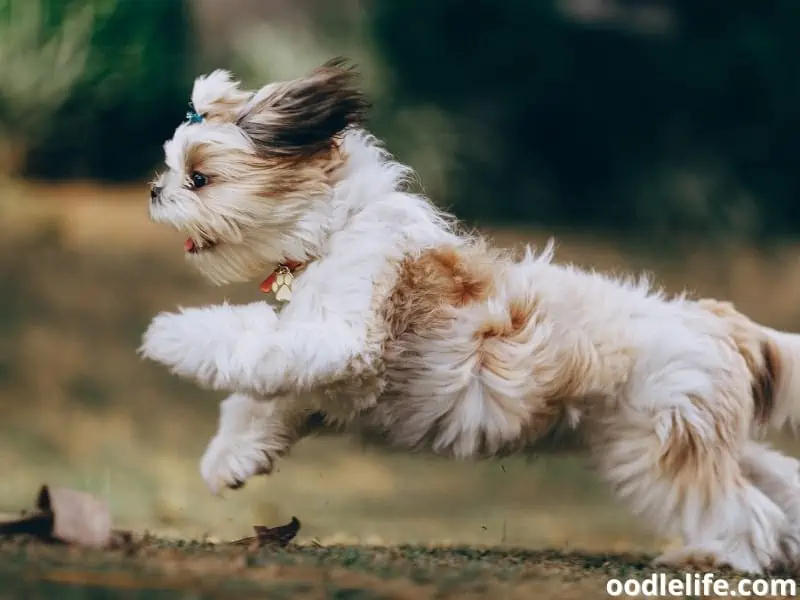
Tibetan Terrier
The Tibetan Terrier is not a full terrier since this breed has remained a purebred for more than 2,000 years. The genetics of the Tibetan Terrier has crossover with gray wolves. Nonetheless, this breed does not look like the typical wolf.
The Tibetan Terrier has a lifespan of 12 to 15 years and is great for families. They’re friendly with school-age children and get along well with other pets.
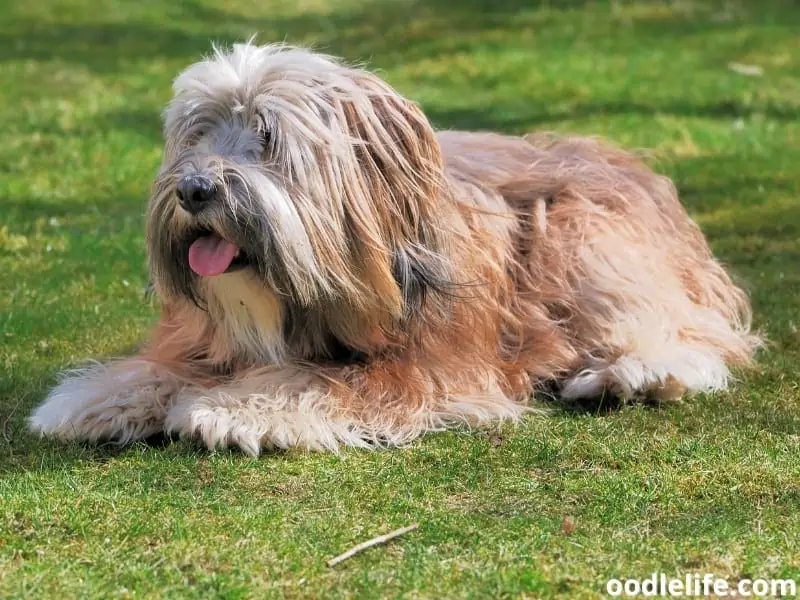
Frequently Asked Questions About Wolf vs Dogs
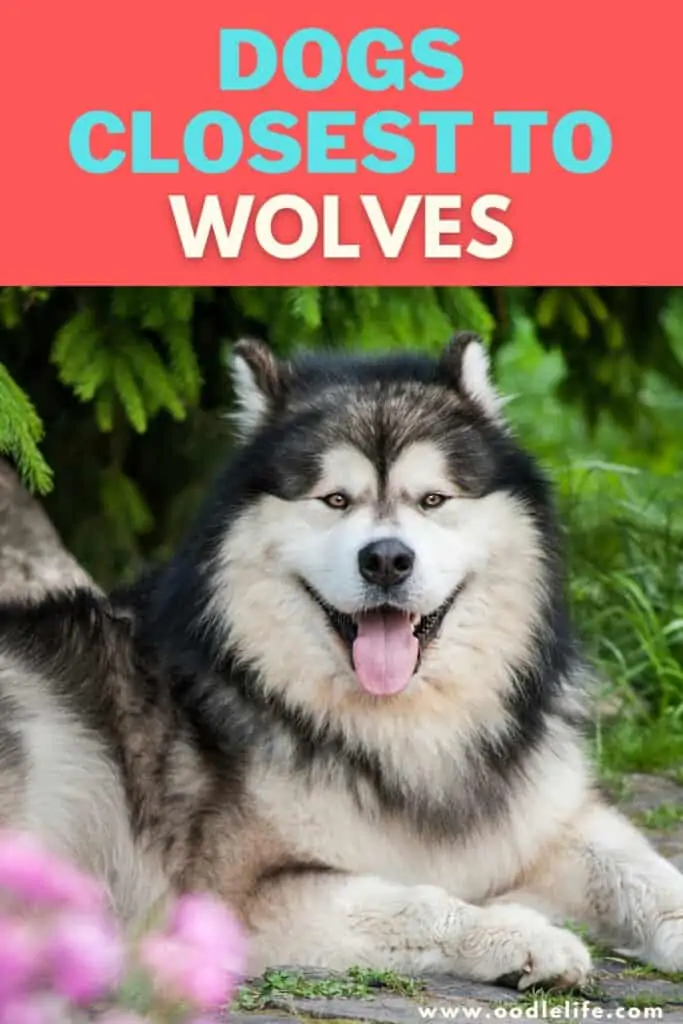
Are wolves and dogs the same species?
Though they share a common ancestor and much of their DNA, wolves and dogs are not the same species. Dogs (Canis lupus familiaris) are a subspecies of the grey wolf (Canis lupus).
What are the main differences between wolves and dogs?
Wolves and dogs differ in many ways, including their physical attributes, behavior, and lifespan. Wolves are generally larger, have broader skulls and longer legs, and are more aggressive than dogs. Additionally, wolves live on average 6-8 years in the wild while domestic dogs can live up to 15 years or more.
Can wolves and dogs interbreed
Yes, they can interbreed due to their close genetic relationship. However, this is not common or advised because of the vast differences in their behavior, life cycle, and general adaptability to a domestic lifestyle.
Which dog breeds are most similar to wolves in terms of behavior?
Breeds like the Alaskan Malamute, Siberian Husky, and Czechoslovakian Wolfdog have behavioral traits that are often associated with wolves, such as a strong pack instinct, high energy levels, and a need for mental and physical stimulation.
Can all dog breeds trace their ancestry back to wolves?
Yes, all dogs, regardless of breed, are descendants of wolves. However, the degree of similarity has significantly decreased over thousands of years of domestication and selective breeding.
Is it a good idea to get a dog breed that’s similar to a wolf if I want a pet with a wild and natural feel?
While dog breeds that resemble wolves can be attractive, they often require experienced handlers. These breeds can be highly energetic, require ample exercise, and can display certain behaviors that may be challenging for first-time dog owners. It’s important to thoroughly research and consider your ability to meet a breed’s specific needs before bringing one into your home.
Why do some dog breeds look more like wolves than others?
Some breeds look more like wolves because they’ve been selectively bred for specific traits similar to those of wolves, like their appearance and endurance. Other breeds have been bred for different traits such as size, temperament, or particular skills, resulting in a wide variety of physical differences between breeds.
Conclusion
If you’re interested in getting a wolf-like dog, this list of dogs closest to wolves provides many different pups to consider. Your new fur friend may expect plenty of long walks, but they’ll keep you loved and entertained for years to come.